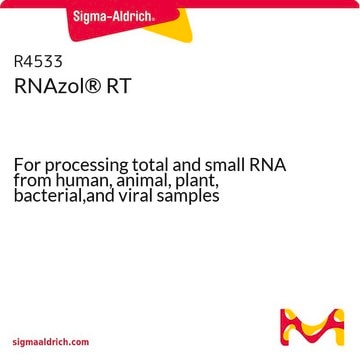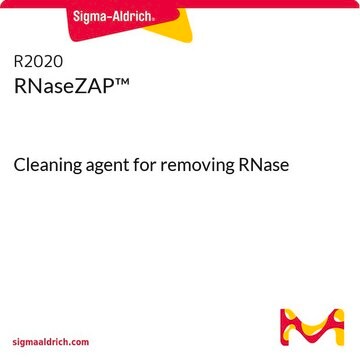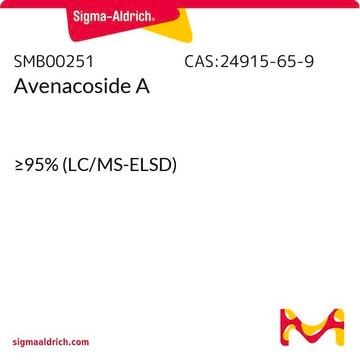This product, a mixture of guanidine thiocyanate and phenol in a monophase solution, effectively dissolves DNA, RNA, and protein on homogenization or lysis of tissue sample. After adding chloroform or 1-bromo3-chloropropane and centrifuging, the mixture separates into 3 phases: an aqueous phase containing the RNA, the interphase containing DNA, and an organic phase containing proteins. Each component can then be isolated after separating the phases. Please see the link below to review further information as well as review specific protocols:
https://www.sigmaaldrich.com/deepweb/assets/sigmaaldrich/product/documents/294/543/t9424bulletin.pdf
93289
TRI Reagent®
for DNA, RNA and protein isolation
Synonym(s):
DNA/RNA/protein extraction reagent, DNA/RNA/protein isolation reagent, DNA/RNA/protein purification reagent, single step RNA extraction reagent, total RNA extraction reagent, TRI Reagent® RNA Isolation Reagent
About This Item
Recommended Products
grade
for DNA, RNA and protein isolation
Quality Level
form
liquid
usage
mL sufficient for 107 cells
mL sufficient for 100 mg tissue
impurities
phenol
Looking for similar products? Visit Product Comparison Guide
General description
Application
Features and Benefits
- Easily scalable RNA isolation
- Works with many sources: human, plant, yeast, bacterial, or viral
- Better yields than traditional guanidine thiocyanate/cesium chloride methods
Legal Information
related product
Signal Word
Danger
Hazard Statements
Precautionary Statements
Hazard Classifications
Acute Tox. 3 Dermal - Acute Tox. 3 Inhalation - Acute Tox. 3 Oral - Aquatic Chronic 2 - Eye Dam. 1 - Muta. 2 - Skin Corr. 1B - STOT RE 2
Target Organs
Nervous system,Kidney,Liver,Skin
Supplementary Hazards
Storage Class Code
6.1A - Combustible acute toxic Cat. 1 and 2 / very toxic hazardous materials
WGK
WGK 2
Flash Point(F)
174.2 °F - closed cup
Flash Point(C)
79 °C - closed cup
Personal Protective Equipment
Choose from one of the most recent versions:
Already Own This Product?
Find documentation for the products that you have recently purchased in the Document Library.
Customers Also Viewed
Articles
Simple DNA/RNA purification methods aid genome analysis from various sources, enhancing research efficiency.
Simple DNA/RNA purification methods aid genome analysis from various sources, enhancing research efficiency.
Simple DNA/RNA purification methods aid genome analysis from various sources, enhancing research efficiency.
Simple DNA/RNA purification methods aid genome analysis from various sources, enhancing research efficiency.
Protocols
TRI Reagent enables simultaneous DNA, RNA, and protein isolation with sample prep guidelines and troubleshooting.
TRI Reagent enables simultaneous DNA, RNA, and protein isolation with sample prep guidelines and troubleshooting.
TRI Reagent enables simultaneous DNA, RNA, and protein isolation with sample prep guidelines and troubleshooting.
TRI Reagent enables simultaneous DNA, RNA, and protein isolation with sample prep guidelines and troubleshooting.
-
Excuse me, what is the principle of trizol reagent to separate DNA and RNA?
1 answer-
Helpful?
-
Active Filters
Our team of scientists has experience in all areas of research including Life Science, Material Science, Chemical Synthesis, Chromatography, Analytical and many others.
Contact Technical Service














